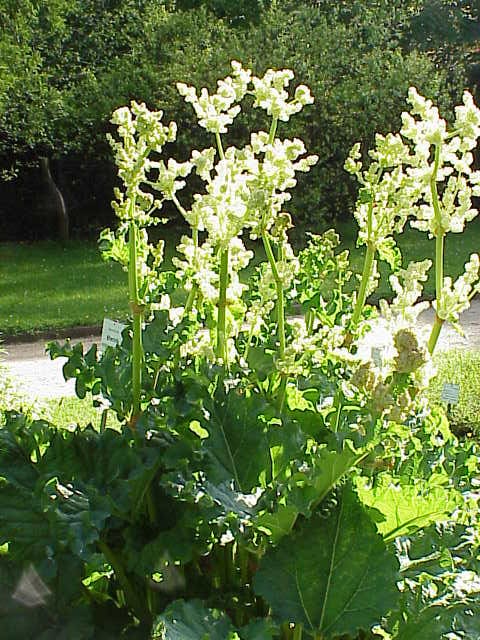
🌿 Morphology
🌞 Growing conditions
🌍 Origin and family
🌾 Uses
Warning: Despite the care taken in writing this sheet, it is essential to cross-reference sources before using or consuming any plant. When in doubt, consult a qualified professional
Permaculture uses
Medicinal Rhubarb is primarily used for its potent medicinal properties, particularly its roots, which are a strong purgative and are employed in traditional Chinese medicine. It can be used in permaculture gardens as a medicinal plant, offering a natural source of therapeutic compounds. It is not typically eaten as a food crop like garden rhubarb (Rheum x hybridum).
Permapeople description
Rheum officinale is a medicinal plant used in traditional Chinese medicine. It is known for its purgative and anti-inflammatory properties.
Botanical description
Rheum officinale is a herbaceous perennial plant in the Polygonaceae family, native to Asia. It grows to a height of 1.5 to 2 meters. The plant has large, ovate to oblong-ovate leaves, often cordate at the base. The inflorescence is a large, branched panicle bearing numerous small, greenish-white to reddish flowers. The rootstock is thick, fleshy, and dark brown externally, yellow-orange internally, characterized by a distinctive odor and bitter taste.
Companion planting
While specific companion planting data for Rheum officinale is limited, generally rhubarb benefits from companions that deter pests such as flea beetles and cabbage white butterflies. Good companions include alliums (garlic, onions, chives) and chamomile. Avoid planting near aggressive spreaders or plants that compete heavily for nutrients.
Propagation methods
Medicinal rhubarb can be propagated by seed sowing in spring or autumn. Division of the rootstock in spring or autumn is also a common method. Root cuttings can also be used, taken in late autumn or early spring.
History and traditions
Medicinal rhubarb has a long history of use in traditional Chinese medicine, dating back thousands of years. It was a highly valued commodity traded along the Silk Road. The dried roots were used as a potent laxative and for treating various digestive ailments. It has also been historically employed in Tibetan medicine. European use developed later, with increased interest during the Middle Ages.
Usage calendar
Flowering occurs in late spring to early summer (May-June). Harvesting of the roots typically takes place in autumn (September-October) after the plant has died back. Seeds can be sown in spring (March-April) or autumn (September-October). Root division is best done in early spring (March-April) or late autumn (October-November).
